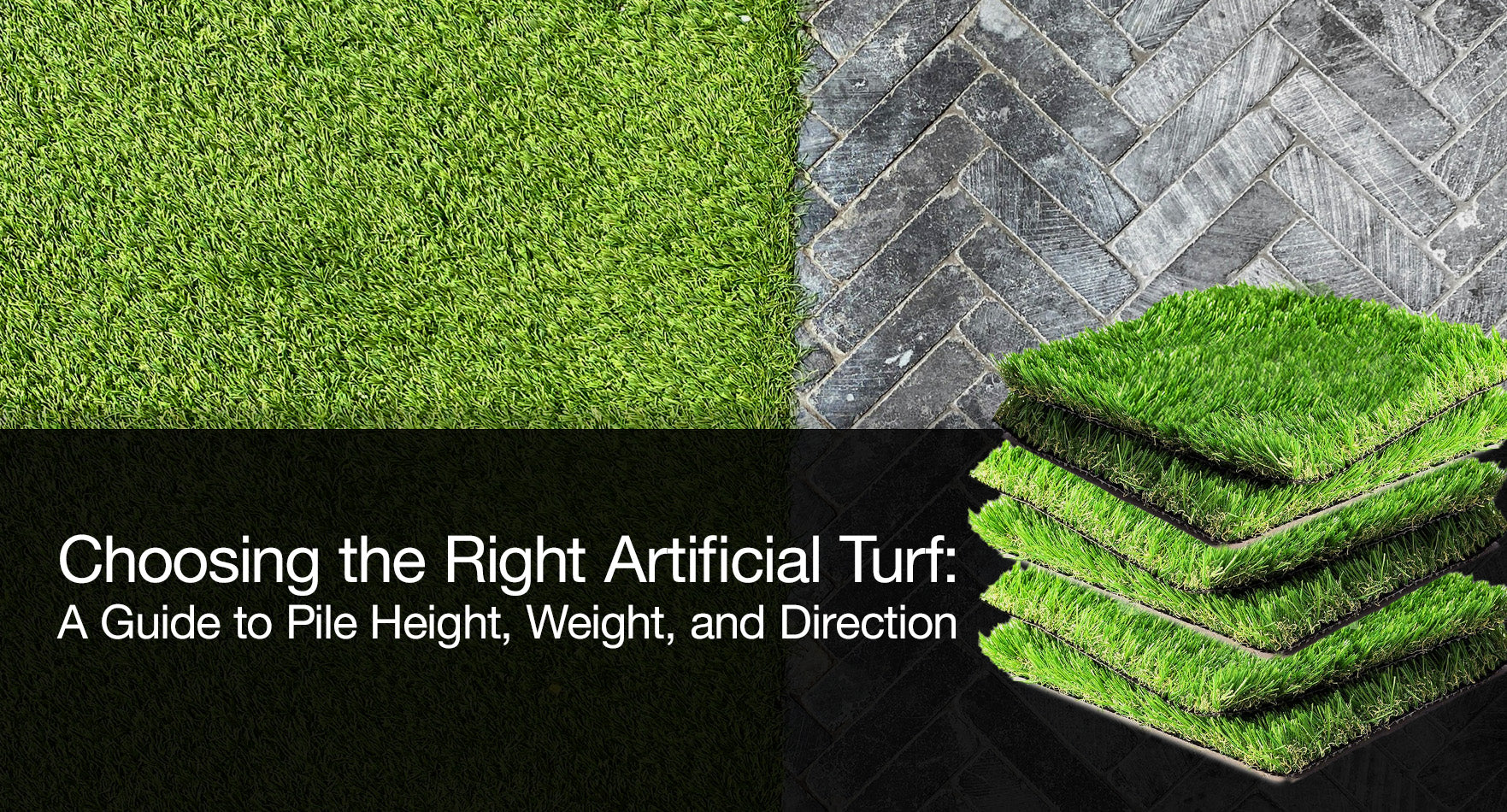Artificial turf is an excellent choice for homeowners looking for a low-maintenance lawn solution that stays green all year round. However, selecting the right artificial turf involves considering several factors such as pile height, weight, and direction. This blog post will guide you through these considerations to help you make an informed decision that suits your landscape needs.
Understanding Pile Height
Pile height refers to the length of the grass blades on artificial turf. The ideal pile height for your turf depends on its intended use. For instance:
- Landscaping: If you're looking for aesthetic appeal for your yard or garden, a longer pile height of about 1.5 to 2 inches can give a lush, natural grass look.
- Sports and Play Areas: For areas intended for sports or children's play, shorter pile heights, around 0.5 to 1.25 inches, are preferable as they can withstand heavy foot traffic and provide a more stable surface.
- Pet Areas: Turf with a shorter pile height is also ideal for pet areas, as it's easier to clean and maintain.
Choosing the right pile height not only affects the look and feel of your turf but also its longevity and how it wears over time.
Considering Turf Weight
Turf weight is another critical factor to consider, as it typically indicates the density and durability of the product. Heavier turf:
- Offers more durability and is better suited to high-traffic areas.
- Is usually made with a higher density of fibers, which can contribute to a more realistic appearance and feel.
- Can have better UV stability and withstand weather changes more effectively.
When comparing options, check the total weight per square yard. A heavier turf may require a more robust installation process but will likely last longer and look better.
Determining Pile Direction
Pile direction plays a significant role in how the turf looks once installed. It can affect the color and shine of your lawn from different viewing angles. To ensure the most natural appearance:
- Always lay your turf so the pile direction points towards the main viewing area or the place from which you'll most often see the lawn.
- If installing multiple pieces of turf, make sure the pile direction is consistent across all pieces to avoid noticeable seams and color shifts.
For areas that see varying light conditions throughout the day, consider how the pile direction interacts with the natural light to maximize the visual appeal at different times.
Additional Considerations
When choosing artificial turf, also consider:
- Infill type: Depending on the use of your turf, different types of infill can provide additional cushioning, help with drainage, and keep the blades standing upright.
- Color choices: Artificial turf comes in varying shades of green and even multi-tone blades that mimic the look of real grass more closely.
- Warranty and UV protection: Always check for a good warranty that covers wear and tear and UV protection to ensure your turf stays green without fading.
Selecting the right artificial turf involves more than just picking out the first option you see. By considering the specific needs of your space, whether it’s for landscaping, sports, or pets, and understanding the implications of pile height, weight, and direction, you can invest in turf that enhances the beauty and functionality of your outdoor areas. With this guide, you're now equipped to choose the best artificial turf that meets your requirements and will last for years to come.










